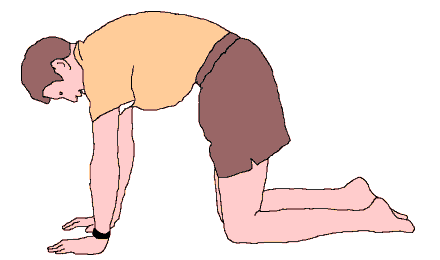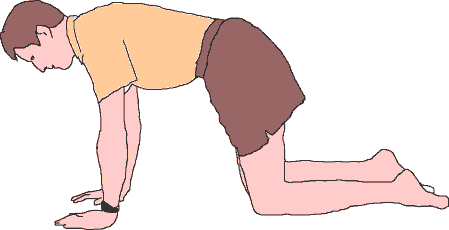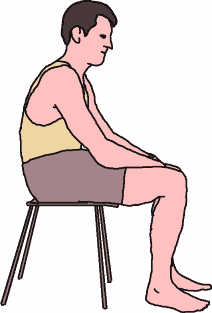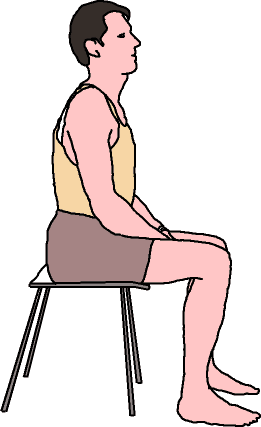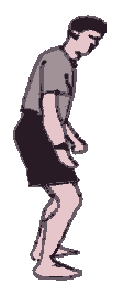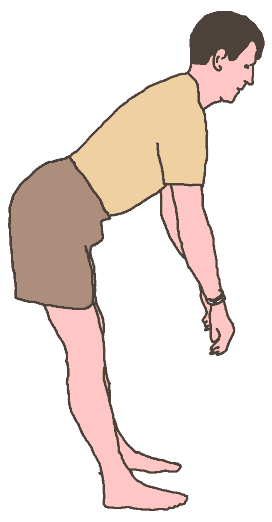| |||||||||||||||||||||||||||
|---|---|---|---|---|---|---|---|---|---|---|---|---|---|---|---|---|---|---|---|---|---|---|---|---|---|---|---|
|
Introduction:-
You can't diagnose & "fix" a lesion that is associated with your Low Back Pain. It's up to your doctor to do that. You can however find out the habitual movement pattern that is causing your pain. Avoidance of this movement pattern is a very powerful back pain management tool.
Add to that the power of therapeutic Pilates exercises, and you have a good chance of managing - maybe even curing - your back problem.
Determining if your Pain is caused by Lumbar Flexion:-
Six Assessments for Pain upon Lumbar Flexion are described. Work through them! Take notes as you go! - (1) Quadruped Position- In the quadruped position, flex your back. If your pain increases, you probably have "pain upon lumbar flexion". (2) Seated:- While seated, flex your back (see diagram). If your pain increases, you probably have "pain upon lumbar flexion". (3) Forward Bending:- When bending forward, if you have pain as the back bends, you very probably have "pain upon lumbar flexion". If you start your forward bend by using the "Position of Mechanical advantage", and avoid excessive lumbar flexion, you will find that your pain is reduced. (4) Your Body Type:- If you have a tall slender masculine build and are between 15 and 50 years old, you likely have "pain upon lumbar flexion",. (5) Your Life Style:- If you spend a lot of your day seated with your lumbar spine in flexion, or you are in an occupation that requires a lot of forward bending, you likely have "pain upon lumbar flexion". (6) Your pain may be acute, or chronic and/or recurrent. |
|
Determining if your pain is caused by Lumbar Extension:-
Six Assessments for Pain upon Lumbar Extension are described. Again: Work through them! Take notes as you go! - (1) Quadruped Position- In the quadruped position, extend your back. If your pain increases, you probably have "pain upon lumbar extension". (2) Seated:- While seated, extend your back (see diagram- RHS). If your pain increases, you probably have "pain upon lumbar extension". (3) Return from Forward Bending:- When returning from forward bending, if you have pain as your back straightens, you very probably have "pain upon lumbar extension". If you start your return from forward bending by using the "Position of Mechanical advantage", and avoid excessive lumbar extension, you will find that your pain is reduced. (4) Your Body Type:- If you have "pain upon lumbar extension", you are likely to be a short, thick set or overweight male or female. You may have a large pelvis & buttocks. Often, you will have a large abdomen. Often (but by no means always) you will be 55 years or over. (5) Your Life Style:- You may spend a lot of your day seated on the front of your seat with your lumbar spine in extension, or you may be in an occupation that requires a lot of lumbar extension (e.g. horse riding, reaching above your head). (6) You likely have long term or recurrent back pain. |
|||||||||||||||||||||||||
